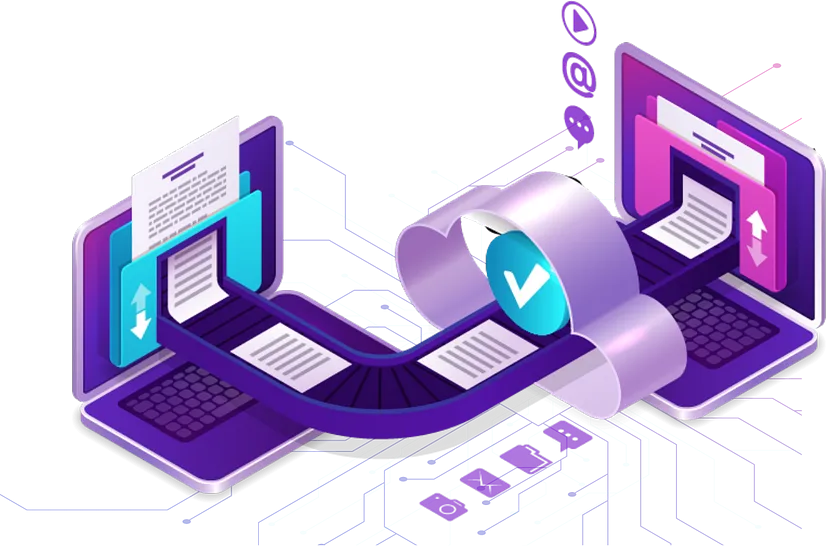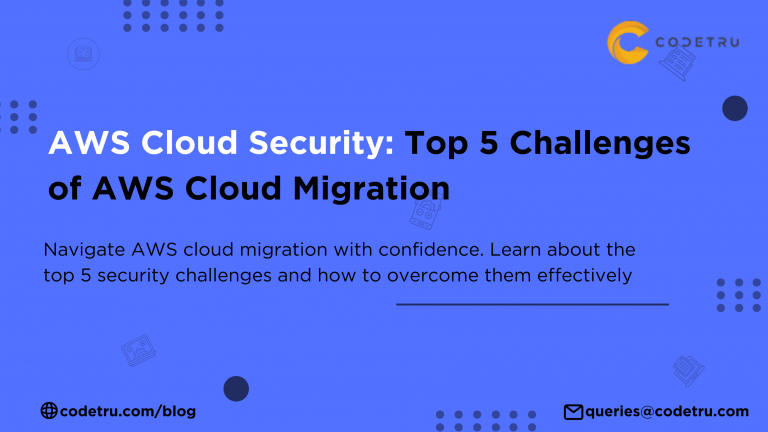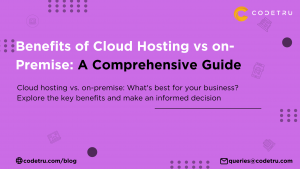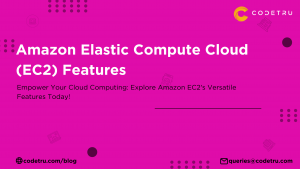As every organization today undergoing digital transformation, cloud adoption is at a historic peak. Many researchers declare that by 2025 globally 85% of organizations adapt cloud-focused ecosystem. Among all the cloud storage systems available in the market, AWS is swiftly transforming to be a global choice for those looking forward to invest in progressive storage, scalability, and reliability. But switching to AWS needs thorough accuracy and planning. Multiple challenges make a move in the way of people developing spectacular AWS cloud migration strategies. This blog will put across 5 challenges you need to be mindful of while developing AWS Cloud migration strategy.
You should begin the cloud migration approach by analysing and estimating ongoing in-house operations, cloud, or hybrid environment. A clear organizational overview can support you in finding what’s in your ecosystem, realize dependencies, and also help you figure out which data or assets will be easy to handle and elements that require keen attention. As the intricacy of migrating functioning applications differs on various factors like lifespan, ongoing architecture complexity, adaptations, licensing agreements integrations, and others. A clear review will help in crafting a powerful migration strategy, nail down an approach, and get appropriate vulnerability migration strategies fixed for rapid and efficient turnaround.
5 Savior Tips to Handle AWS Migration Journey Challenges
You can migrate your data and applications in a phased manner if all your challenges, needs, and prospects are documented. In the process of AWS migration, although you rehost and re-platform your applications, there are possibilities that you will come across some problems. Here are 5 savior tips that can help your AWS Cloud Migration strategy.

1. Powerful Security Processes
Though the cloud pushed boundaries to multiple opportunities, it also needs companies to develop and implement powerful security policies to get authority. Besides AWS providing multiple security services targeting your data, identities, applications, and devices, if you require additional security and compliance needs, you can opt for a wide variety of security, identity, and compliance capabilities. You can use AWS Identity Services to handle resources and permission at scale.

2. Track Data and Applications
By the time you shift to AWS, you will witness a highly dynamic setting that constantly adjusts. Having contemporary techniques and approaches for tracking data or reviewing applications might no longer be appropriate. Instead, adopting Amazon CloudWatch can assist in the progressive supervision of applications, offering you workable insights to swiftly react to performance modifications and optimize resource utilization. Since the service constantly gathers “monitoring and operational” data in the form of logs, metrics, and events you can get a real-time and bird view of your AWS instances. Also access complete visibility into their health and well-being, so you can take essential actions to keep them running smoothly.

3. Successfully push your data
Data is crucial for any organization as it piles up from day 1. Pushing data is not as easy as you think, because you need to have crystal clarity of what data you are pushing, the reason behind pushing it, and what processing is required to raise the quality bar, accessibility, and scalability. AWS provides a wide range of services and tools to help you migrate data sets like files and databases to images and tape backups. AWS tools like AWS storage gateway, AWS direct connect, and AWS Datasync will help you in extending on-premises applications and migrate the data between AWS cloud and on-premises data centre.

4. Smart Cost Management
Cloud provides a wide range of potentials for companies to take advantage of an at-pace scenario. Anyways, effortless provision of services also triggers overall cost hikes. Smart cost management demands you to leverage multiple cost optimization potentials to decrease monthly bills and also overpay. For example, when consumption is low, you can choose to restructure your instances which will decrease the overall cost of ownership. Simultaneously, you can count on tools like AWS cost explorer to visualize, handle and optimize your cloud costs.

5. Allowing Flexibility
A prime reason for most companies behind switching to the cloud is considering its flexibility. Now the question is how to acquire that flexibility on AWS? how do you confirm that applications you shift to AWS are favorably flexible. One way to do this is to choose AWS Regions that offer diverse, physically divided accessibility zones joined through low-latency, high-throughput, and redundant networking.

FAQs About AWS Cloud Migration
1. What are the main security challenges when migrating to AWS?
It is important to ensure strong security measures when migrating to AWS. Key challenges include managing data privacy, security with applications, and regulatory compliance. AWS offers a variety of security services to address these challenges, but enterprises may need to implement additional security measures based on their specific needs. AWS Identity Services can be used to help manage resources and licenses at scale.
2. How can I effectively track data and applications during AWS migration?
Tracking data and applications in a dynamic AWS environment requires modern monitoring tools. Amazon CloudWatch is an effective solution for this, as it collects analytics and performance data in the form of logs, metrics and events. This service gives you real-time insights, allowing you to react faster to business changes and make more efficient use of resources. It provides complete visibility into the health and performance of your AWS instances.
3. What are the best practices for migrating data to AWS?
Migrating data to AWS has many best practices, such as a clear understanding of the data being migrated, the reasons for the migration, the features needed to ensure data quality and availability AWS offers a range of tools to facilitate data migration, including AWS Storage Gateway, AWS Direct Connect, and AWS DataSync. These tools help extend on-premises applications and efficiently move data between AWS and on-premises data centers.
4. How can I manage costs effectively during AWS migration?
Effective cost management in AWS migration uses cost efficiency techniques to reduce monthly costs and avoid additional payments. For example, reconfiguring instances when they are less used can reduce overall costs. Tools like AWS Cost Explorer can help identify, track and optimize cloud spend by providing a detailed view of your costs and areas where you can save money.
5. What strategies can ensure flexibility when migrating to AWS?
To ensure flexibility when migrating to AWS, it’s essential to choose AWS Regions that offer diverse, physically separated availability zones connected through low-latency, high-throughput, and redundant networking. This approach ensures that applications remain flexible and resilient, capable of scaling up or down as needed. Flexibility can also be achieved by designing applications to be cloud-native, enabling them to take full advantage of AWS’s scalability and flexibility features.







